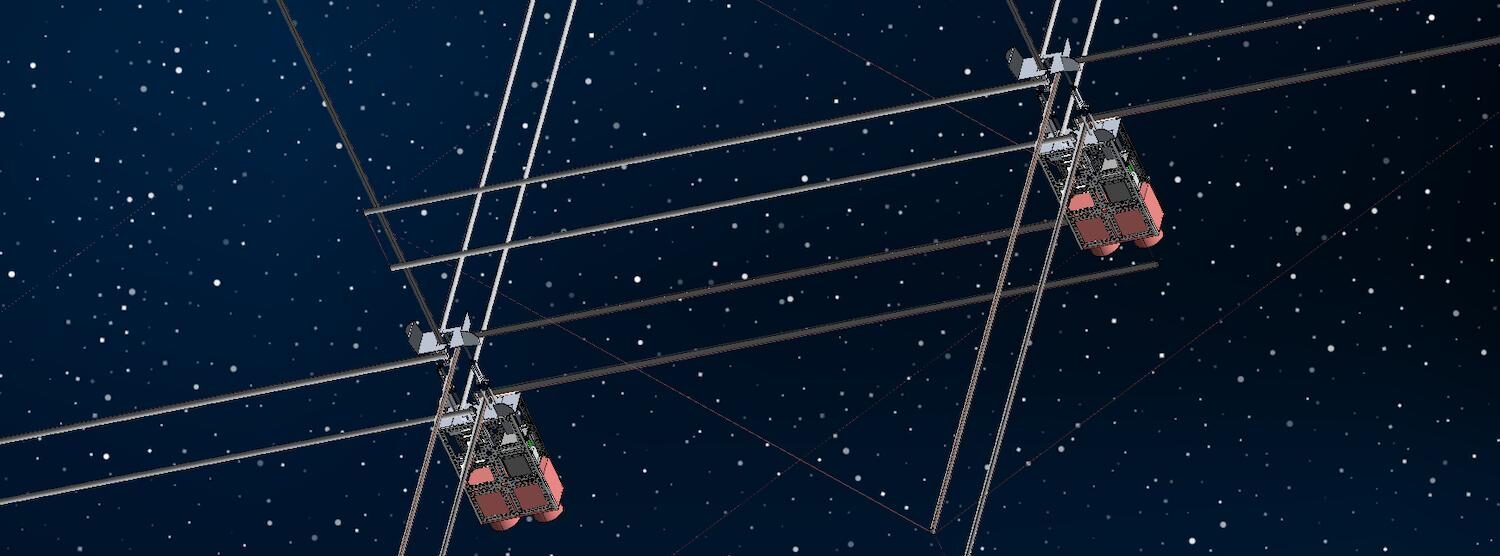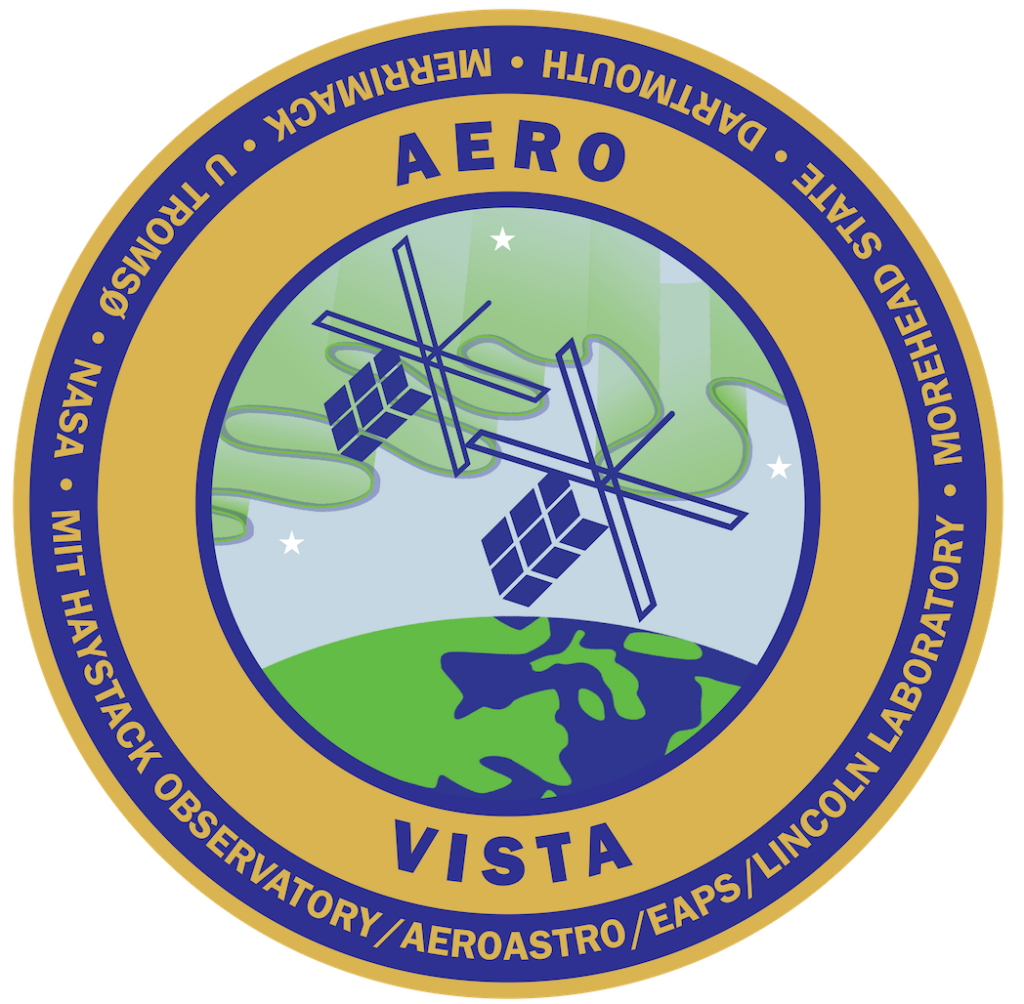
AERO-VISTA CubeSat Mission
Earth’s aurora has a deep complexity and richness that is of intense interest for our understanding of space physics, with many unknown or ill-defined features.
The Auroral Emission Radio Observer (AERO) is a one-year CubeSat mission in polar orbit that will significantly advance our knowledge by examining radio emissions from the auroral acceleration region in near-Earth space.

AERO uses a unique electromagnetic vector sensor (VS) to study auroral kilometric radiation (AKR) at low-frequency (LF) and high-frequency (HF) ranges, from 100 kHz–5 MHz, with six orthogonal dipole and loop antennas providing angle-of-arrival and polarization information within a single unit.
Auroral radio emissions in the LF and HF ranges allow radio remote sensing, leading to investigation of nonlinear wave processes and wave-particle interactions operating in a broad range of heliospheric, planetary, and astrophysical plasmas. The mission will store many orbits of compressed data on board, then select download segments based either on summary spectrogram ground analysis or on automatic detection of bright auroral radio events. AERO is also a stepping stone to a novel space-borne high-capability remote sensing platform for diverse scientific targets such as radio emission from the solar corona and inner heliosphere, and anisotropic turbulence properties of interplanetary medium plasma.
VISTA (Vector Interferometry Space Technology using AERO) is AERO’s twin and will demonstrate novel radio interferometric technology. The AERO and VISTA CubeSats both host vector-sensing antenna systems providing advanced electromagnetic capabilities. Together, they will provide the first in-space demonstration of interferometric imaging, beamforming, and nulling using electromagnetic vector sensors at low frequencies (100 kHz–15 MHz). A key goal of the joint missions’ technology demonstration is to validate theoretical sensor performance modeling indicating that interferometric arrays composed of vector sensors will be able to maintain sensitivity even in the presence of terrestrial interference. If validated in flight, this capability would relax the requirement that space-based low-frequency interferometers be placed far from the Earth (e.g., lunar orbit), and the closer communications range will significantly increase the data volume returned from space-based radio telescope systems. The two-spacecraft AERO-VISTA mission will address the auroral science goals of AERO while adding three additional technology demonstration goals enabled by the second CubeSat, VISTA.
Haystack team members
- Philip J. Erickson
- Frank Lind
- Mary Knapp
- Lenny Paritsky
- John Swoboda
- Ryan Volz
- Robert Schaefer
- Tobias Gedenk
- Russ McWhirter
- Michael Hecht
Publications
Erickson, P., Crew, G., Hecht, M., Knapp, M., Lind, F., Volz, R., … Weatherwax, A. T. (2018). AERO: Auroral Emissions Radio Observer. In Proceedings of the AIAA/USU Conference on Small Satellites (pp. SSC18-WKVI-04). Retrieved from https://digitalcommons.usu.edu/cgi/viewcontent.cgi?article=4265&context=smallsat
Lind, F., Erickson, P., Hecht, M., Knapp, M., Crew, G., Volz, R., … Cahoy, K. (2019). AERO & VISTA: Demonstrating HF Radio Interferometry with Vector Sensors. Small Satellite Conference. Retrieved from https://digitalcommons.usu.edu/smallsat/2019/all2019/96
Knapp, M., Robey, F., Volz, R., Lind, F., Fenn, A., Morris, A., … Seager, S. (2016). Vector antenna and maximum likelihood imaging for radio astronomy. In IEEE Aerospace Conference Proceedings (Vol. 2016-June, pp. 1–17). IEEE. https://doi.org/10.1109/AERO.2016.7500688
Volz, R., Knapp, M., Lind, F. D., & Robey, F. C. (2017). Covariance estimation in terms of Stokes parameters with application to vector sensor imaging. In Conference Record – Asilomar Conference on Signals, Systems and Computers (pp. 1339–1343). IEEE. https://doi.org/10.1109/ACSSC.2016.7869593
Knapp, M., Volz, R., Lind, F. D., Robey, F. C., Fenn, A., Johnson, K., … Klein, S. (2016). HF Vector Sensor for Radio Astronomy: Ground Testing Results. In AIAA SPACE 2016 (pp. 1–17). Reston, Virginia: American Institute of Aeronautics and Astronautics. https://doi.org/10.2514/6.2016-5498
Robey, F. C., Knapp, M., Fenn, A., Silver, M., Johnson, K., Lind, F. D., … Neylon-Azad, F. (2016). High Frequency (HF) Radio Astronomy from a Small Satellite. In AIAA/USU Conference on Small Satellites. Retrieved from https://digitalcommons.usu.edu/smallsat/2016/TS11SciPayload1/3
Presentations
Jim LaBelle, “Noises from the Sky” https://www.youtube.com/watch?v=e-ysQHQu8h8&list=PLWwWW7rc6eKgHny-JARqhhAiiZ7lJxGbZ&index=3